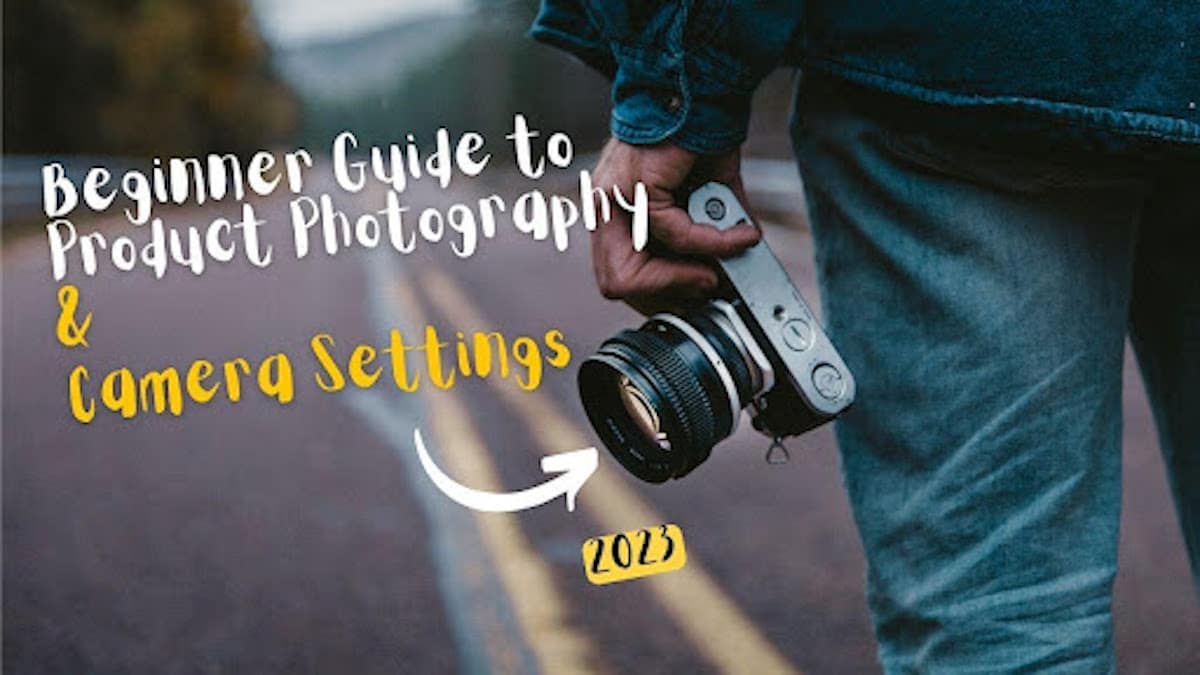Table of Contents
Are you interested in product photography but don’t know where to start? Look no further than this beginner guide to product photography and camera settings. Taking great product photos is essential for any business, whether you’re selling products online or in a brick-and-mortar store. In this guide, we’ll cover everything you need to know to get started with product photography, including camera settings, lighting, and the best cameras for product photography.
Camera Settings For Product Photography
Regarding product photography, getting your camera settings right is vital. Here are some basic camera settings to consider:
Aperture
Aperture refers to the size of the opening in your lens through which light passes. A wider aperture (represented by a lower f-stop number) lets in more light and creates a shallower depth of field. In comparison, a narrower aperture (defined by a higher f-stop number) lets in less light and creates a deeper depth of field. For product photography, you’ll generally want a deeper depth of field to ensure that all parts of your product are in focus. A good starting point is an aperture of f/8.
Shutter Speed
Shutter speed refers to how long your camera’s shutter is open. A faster shutter speed lets in less light and freezes motion, while a slower shutter speed allows in more light and creates motion blur. You’ll generally want a slower shutter speed for product photography to ensure your product is well-lit and focused. A good starting point is a shutter speed of 1/125th of a second.
ISO
ISO refers to the sensitivity of your camera’s sensor to light. A higher ISO lets in more light and creates more noise, while a lower ISO lets in less light and creates less noise. For product photography, you’ll generally want a lower ISO to ensure your photos are sharp and clear. A good starting point is an ISO of 100.
Lighting
Lighting is another key factor in product photography. Here are some tips for getting the lighting right:
Use Natural Light
Natural light is one of the best types of lighting for product photography. Set up your product near a window or outside to take advantage of natural light. Avoid direct sunlight, creating harsh shadows and blowing out your highlights.
Use a Lightbox
If you don’t have access to natural light or want more control over your lighting, consider using a lightbox. A lightbox is a box that diffuses light and creates a soft, even lighting effect on your product.
Use a Reflector
A reflector is a tool that bounces light back onto your product, creating a more even lighting effect.
Composition
Composition is the arrangement of elements in your photo, and it can make or break a product photo. Here are some tips for getting the composition right:
Rule of Thirds
The rule of thirds is a guideline that suggests dividing your photo into thirds both horizontally and vertically and placing your subject at the intersection of those lines. This creates a more visually exciting composition.
Negative Space
Negative space is the area around your subject, which can help make it stand out. Try leaving space around your subject to create a more dynamic composition.
Angles
Experimenting with different angles can help to create a more exciting photo. Try shooting from above, below, or at a diagonal angle to add visual interest to your product photo.
Also, read about the best cameras for filming hunts
Best Cameras For Product Photography
Product photography can make or break your business. With the rise of online shopping, high-quality product photos have become more important than ever before. You need the right equipment to achieve stunning visuals; your camera is one of the most important pieces. We have explored the best cameras for product photography to help you choose the perfect one for your needs.
- Canon EOS 5D Mark IV
- Nikon D850
- Sony Alpha a7R III
- Fujifilm X-T3
- Olympus OM-D E-M1 Mark II
Conclusion
Product photography can be a fun and rewarding pursuit, whether you’re a business owner looking to improve your online sales or simply an amateur photographer looking to improve your skills. By following the tips in this beginner guide to product photography and camera settings, you’ll be well on your way to taking great product photos that will impress your audience. Remember to experiment with different camera settings, lighting setups, and composition techniques to find the best style. You can get a complete buying guide on looking for the best cameras for product photography on the best cameras magazine Website.
Frequently Asked Questions (FAQs)
What camera should I use for product photography?
You don’t necessarily need a fancy camera to take great product photos. A basic DSLR or smartphone camera can work well if you have good lighting and can use your camera settings.
Do I need a tripod for product photography?
While a tripod can help keep your camera steady, it’s unnecessary. You can still take great product photos without a tripod if you have good lighting and can steady your camera.
How can I edit my product photos?
Many photo editing software options are available, from free programs like GIMP to more expensive options like Adobe Photoshop. Experiment with different software options to find one that works for you.
Can I use a smartphone for product photography?
Yes, smartphones are capable of taking good product photos, especially with the use of additional lighting and accessories. However, a dedicated camera will generally offer better image quality and more control over settings.
What lighting should I use for product photography?
Soft, diffused lighting is ideal for product photography, as it creates even lighting and reduces harsh shadows. This can be achieved with various lighting setups, including natural light, studio lights, or a combination.


